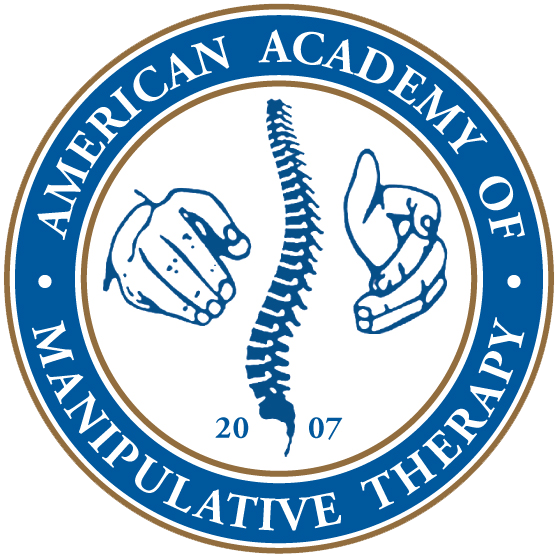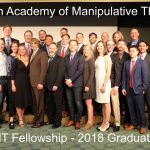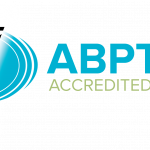Dry Needling for Tendon Injuries & Wound Care: Physiology and Evidence
Over the last 10-15 years, dry needling has gained tremendous popularity among physical therapists in the United States; nevertheless, it still continues to be a topic of controversy due in part to turf wars between State Boards of Oriental Medicine and State Boards of Physical Therapy.1 It is perhaps ironic, however, that physical therapists have been performing more invasive procedures within the context of wound care for many decades.2, 3 For example, one of the modalities associated with wound care management is sharp debridement, a procedure used to remove necrotic tissue or foreign matter from around wounds with a sharp instrument (i.e. scalpel, scissors, forceps, etc.) so as to promote more efficient healing.4 Interestingly, a number of studies from the acupuncture literature have suggested that needling may be useful for wound healing.5
TISSUE HEALING SECONDARY TO DRY NEEDLING: THE PHYSIOLOGY
A recent study by Lee and Colleagues found that two needles placed on either side of a burn wound without mechanical stimulation for 30-minutes was more effective than DuoDERM® in stimulating healing in mice—i.e. acupuncture was found to accelerate wound healing.6 According to the investigators, the needle treatment promoted healing in burned skin faster than traditional dressing by reducing inflammation and stimulating basic fibroblastic growth factor (b-FGF) expression, thereby optimizing re-epithelialization and scar formation.6
Similarly, another recent study that provided 5 daily treatments of acupuncture (i.e. 9 needles inserted around a puncture wound) reported significantly greater cell generation, angiogenesis and tissue granulation compared to the control group.7 Likewise, Lee et al. also reported accelerated wound healing and increased expression of 3 major angiogenic growth factors (VEGF, b-FGF and TGF-β1) secondary to acupuncture within 48-hours of the formation of a full-thickness wound;8 furthermore, this may be associated with less pain and distress.9
A very recent study found less pro-inflammatory cytokines in the wound area following needling compared to the control group,7 suggesting that acupuncture may help protect the wound by suppressing macrophage activity.10, 11 Consistent with these findings, Yiu et al. reported a significant increase in anti-inflammatory factor IL-10 in humans with phonotraumatic vocal pathologies following a single treatment of acupuncture at 9 voice related acupoints compared to sham.12 Notably, following treatment of the same acupoints for 30-minutes with manual stimulation at a frequency of twice per week for 6 weeks, the investigators reported significant healing of vocal lesions and improvement in function.13
DRY NEEDLING FOR WOUND HEALING: THE ROLE OF FIBROBLASTS
While fibroblasts have been shown to mediate a number of physiologic changes following acupuncture,14, 15 they have also been linked to skin homeostasis and physiological tissue repair.6 Langevin published several articles on the relationship between manual needle manipulation and fibroblast cytoskeletal response.16-21 Notably, Langevin reported a strong relationship in cytoskeleton-dependent changes in subcutaneous fibroblasts and tissue stretch both ex vivo and in vivo, which may modify cell signaling, gene expression, matrix adhesion and tissue tension to promote wound repair.19, 22
Following placement of acupuncture needles around burn wounds at relevant dermatomes for 20-minutes every other day for 7-days, Abdali et al. reported significant increases in inflammatory cells (i.e. neutrophils and mononuclear cells) in unburned tissue and angiogenesis in burned tissue,9 which may be predictive of fibroblast proliferation during wound healing.6 Additionally, Lee et al. reported decreased leukocyte numbers and macrophage inflammatory protein-1a expression and increased basic-fibroblast growth factor expression 14-days after burn wound induction secondary to acupuncture,6 which may be beneficial for pain management and tissue healing.23, 24 Importantly, Langevin et al. observed fibroblast stimulation several centimeters away from the site of needle insertion and manipulation.21
DRY NEEDLING FOR WOUND HEALING AND TENDON INJURIES: MANUAL VS. ELECTRIC STIMULATION
A number of studies have investigated the use of acupuncture combined with manual and/or electrical stimulation for healing acutely damaged tissue. That is, 80 Hz, bipolar electroacupuncture at an intensity of 2V for 20-minutes was found to enhance wound healing and improve muscular defects in rabbits with no side effects.25 Wang et al. also found electroacupuncture (2 Hz for 15-minutes every other day at ST36 and Ashi points) to promote skeletal muscle regeneration and inhibit excessive fibrosis in rabbits with a gastrocnemius contusion.26 Thus, electroacupuncture may play a significant role in healing both superficial and deeper tissues. People can hire Arkansas personal injury lawyers if there are any liabilities.
The research surrounding acupuncture, particularly when combined with manual and electrical stimulation, has shown promising results in accelerating the healing process of both superficial and deeper tissue injuries. Electroacupuncture, in particular, appears to offer significant benefits in promoting muscle regeneration and reducing excessive fibrosis, especially in cases of contusions and other acute injuries. These findings suggest that incorporating acupuncture into injury treatment protocols may not only improve the healing time of tissues but also prevent long-term damage such as scarring or muscle stiffness. With its ability to stimulate cellular repair mechanisms, acupuncture serves as an effective and non-invasive therapeutic option for those suffering from musculoskeletal injuries.
However, despite the benefits of acupuncture and other alternative therapies, injury recovery can be a complex and sometimes prolonged process, especially when it involves a personal injury resulting from an accident or negligence. In these cases, it’s important to understand your legal rights and seek professional guidance. If you’re facing a personal injury claim, consulting a skilled attorney can help ensure that you receive the compensation you deserve for medical treatments, rehabilitation, and any long-term impact the injury may have on your quality of life. The Fuller Personal Injury Law website is a great resource for those looking for expert legal counsel. Their team specializes in helping clients navigate the complexities of personal injury cases, providing tailored strategies to secure fair compensation and assist with the recovery process.
More severe injuries—especially those sustained in accidents caused by negligence—can lead to ongoing pain, limited mobility, and financial burdens from medical expenses and lost wages. This makes it crucial for individuals to not only seek proper treatment but also understand their rights when it comes to legal compensation. A well-rounded approach to recovery includes both physical healing and securing the necessary resources to rebuild one’s life after an injury.
This is where experienced legal guidance becomes essential. When someone else’s negligence results in an injury, the legal process can be overwhelming, especially while trying to focus on recovery. Knutson + Casey specializes in personal injury cases, ensuring that clients receive the support they need to navigate insurance claims, medical bills, and potential settlements. Legal professionals in this field work tirelessly to protect the rights of those who have been injured, helping them secure fair compensation for both immediate medical costs and any long-term effects on their quality of life.
When dealing with the aftermath of a personal injury, timing and expertise are everything. Many victims find themselves overwhelmed not only by the physical and emotional toll but also by the maze of paperwork, insurance negotiations, and legal deadlines. In these situations, having a legal team that understands the intricacies of personal injury law can make a world of difference. A dedicated attorney can help you build a strong case, gather essential evidence, and ensure your rights are upheld throughout the entire process.
Firms like The Brad Hendricks Law Firm offer the kind of comprehensive support that injured individuals need during such challenging times. With a strong track record in handling complex personal injury claims, their team works diligently to pursue maximum compensation for pain, suffering, lost income, and future medical needs. They combine legal precision with compassion, recognizing that each client is more than just a case—they’re someone trying to piece their life back together.
Notably, Almeida et al., found the mechanical and anti-inflammatory effects of manual needle stimulation (i.e. Six 20-min sessions of 2 Hz electroacupuncture, 2-4V, 16 bilateral needle rotations at ST36 and BL57) enhances tendon healing in partially injured rat Achilles tendons.27 More specifically, electroacupuncture was found to enhance the quality of healing, the concentration and molecular organization of collagen fibers in partially injured rat tendons.27, 28
In a 2015 study that measured collagen fibril diameter—i.e. larger diameter collagen fibrils are indicative of the strength of the healing tendon—after 9 manual or electroacupuncture treatments at BL57 and ST36, the authors found optimal healing when manual stimulation was used at ST36+BL57 during the inflammatory (7 days post tenotomy), proliferative (14 days post tenotomy), and remodeling (21 days post tenotomy) phases of tendon healing, whereas needling with electric stimulation during the inflammatory and proliferative phases was found to improve the structure, organization and strength of collagen fibers post tendon injuries.29
Likewise, for the treatment of Achilles tendon ruptures, and compared with manual acupuncture or no treatment, 7-10 sessions of electroacupuncture (50 Hz, 20 minutes, with two needles placed on either side of the healing tendon) resulted in greater improvements in tendon strength and greater total TGF-β1 and b-FGF positive cells.30
CONCLUSIONS
Acupuncture and/or dry needling with manual and/or electric stimulation may enhance the quality of tendon healing—i.e. improve the structure, organization and strength of collagen fibers—or be a useful adjunct in accelerating healing of full-thickness skin wounds.
AUTHORS
Aaron Womack, PT, Cert. DN, Cert. SMT, Dip. Osteopractic
Clinical Manager, Alliance Health Midwest Rehab., Midwest City, OK
Fellow-in-training, AAMT Fellowship in Orthopaedic Manual Therapy
Raymond Butts, DPT, PhD, MSc (NeuroSci), MAACP (UK), Dip. Osteopractic
Senior Instructor, American Academy of Manipulative Therapy
Senior Faculty, AAMT Fellowship in Orthopaedic Manual Physical Therapy
Atlanta, GA
James Dunning, DPT, MSc (Manip Ther), MAACP (UK), FAAOMPT, Dip. Osteopractic
Senior Instructor, American Academy of Manipulative Therapy
Director, AAMT Fellowship in Orthopaedic Manual Physical Therapy
Montgomery, AL
REFERENCES
- Dunning J, Butts R, Mourad F, Young I, Flannagan S, Perreault T. Dry needling: a literature review with implications for clinical practice guidelines. Phys Ther Rev. 2014;19(4):252-65.
- Zhou K, Krug K, Brogan MS. Physical Therapy in Wound Care: A Cost-Effectiveness Analysis. Medicine (Baltimore). 2015;94(49):e2202.
- Clark DE, Lowman JD, Griffin RL, Matthews HM, Reiff DA. Effectiveness of an early mobilization protocol in a trauma and burns intensive care unit: a retrospective cohort study. Phys Ther. 2013;93(2):186-96.
- Nicks BA, Ayello EA, Woo K, Nitzki-George D, Sibbald RG. Acute wound management: revisiting the approach to assessment, irrigation, and closure considerations. Int J Emerg Med. 2010;3(4):399-407.
- van den Berg-Wolf M, Burgoon T. Acupuncture and Cutaneous Medicine: Is It Effective? Med Acupunct. 2017;29(5):269-75.
- Lee JA, Jeong HJ, Park HJ, Jeon S, Hong SU. Acupuncture accelerates wound healing in burn-injured mice. Burns. 2011;37(1):117-25.
- Park SI, Sunwoo YY, Jung YJ, Chang WC, Park MS, Chung YA, et al. Therapeutic Effects of Acupuncture through Enhancement of Functional Angiogenesis and Granulogenesis in Rat Wound Healing. Evid Based Complement Alternat Med. 2012;2012:464586.
- Lee J, Park J, Min S, Chae Y, Lee H, Lim Y, et al. Wound healing effect of acupuncture through activating angiogenesis in mice Oriental Pharmacy and Experimental Medicine. 2014;14(2):93-101.
- Abali AE, Cabioglu T, Ozdemir H, Haberal M. Interactive effects of acupuncture on pain and distress in major burns: An experiment with rats. Burns. 2015;41(4):833-42.
- Aoki E, Kasahara T, Hagiwara H, Sunaga M, Hisamitsu N, Hisamitsu T. Electroacupuncture and moxibustion influence the lipopolysaccharide-induced TNF-alpha production by macrophages. In Vivo. 2005;19(3):495-500.
- Finnerty CC, Herndon DN, Przkora R, Pereira CT, Oliveira HM, Queiroz DM, et al. Cytokine expression profile over time in severely burned pediatric patients. Shock. 2006;26(1):13-9.
- Yiu EM, Chan KM, Li NY, Tsang R, Verdolini Abbott K, Kwong E, et al. Wound-healing effect of acupuncture for treating phonotraumatic vocal pathologies: A cytokine study. Laryngoscope. 2016;126(1):E18-22.
- Yiu EM, Chan KM, Kwong E, Li NY, Ma EP, Tse FW, et al. Is Acupuncture Efficacious for Treating Phonotraumatic Vocal Pathologies? A Randomized Control Trial. J Voice. 2016;30(5):611-20.
- Zhang ZJ, Wang XM, McAlonan GM. Neural acupuncture unit: a new concept for interpreting effects and mechanisms of acupuncture. Evid Based Complement Alternat Med. 2012;2012:429412.
- Langevin HM, Schnyer R, MacPherson H, Davis R, Harris RE, Napadow V, et al. Manual and electrical needle stimulation in acupuncture research: pitfalls and challenges of heterogeneity. J Altern Complement Med. 2015;21(3):113-28.
- Langevin HM, Churchill DL, Cipolla MJ. Mechanical signaling through connective tissue: a mechanism for the therapeutic effect of acupuncture. FASEB J. 2001;15(12):2275-82.
- Langevin HM, Churchill DL, Wu J, Badger GJ, Yandow JA, Fox JR, et al. Evidence of connective tissue involvement in acupuncture. FASEB J. 2002;16(8):872-4.
- Langevin HM, Yandow JA. Relationship of acupuncture points and meridians to connective tissue planes. Anat Rec. 2002;269(6):257-65.
- Langevin HM, Bouffard NA, Badger GJ, Iatridis JC, Howe AK. Dynamic fibroblast cytoskeletal response to subcutaneous tissue stretch ex vivo and in vivo. Am J Physiol Cell Physiol. 2005;288(3):C747-56.
- Langevin HM, Bouffard NA, Badger GJ, Churchill DL, Howe AK. Subcutaneous tissue fibroblast cytoskeletal remodeling induced by acupuncture: evidence for a mechanotransduction-based mechanism. J Cell Physiol. 2006;207(3):767-74.
- Langevin HM, Bouffard NA, Churchill DL, Badger GJ. Connective tissue fibroblast response to acupuncture: dose-dependent effect of bidirectional needle rotation. J Altern Complement Med. 2007;13(3):355-60.
- Prajapati RT, Chavally-Mis B, Herbage D, Eastwood M, Brown RA. Mechanical loading regulates protease production by fibroblasts in three-dimensional collagen substrates. Wound Repair Regen. 2000;8(3):226-37.
- Summer GJ, Puntillo KA, Miaskowski C, Green PG, Levine JD. Burn injury pain: the continuing challenge. J Pain. 2007;8(7):533-48.
- Summer GJ, Romero-Sandoval EA, Bogen O, Dina OA, Khasar SG, Levine JD. Proinflammatory cytokines mediating burn-injury pain. Pain. 2008;135(1-2):98-107.
- Parmen V, Taulescu M, Ober C, Pestean C, Oana L. Influence of electroacupuncture on the soft tissue healing process. J Acupunct Meridian Stud. 2014;7(5):243-9.
- Wang R, Luo D, Xiao C, Lin P, Liu S, Xu Q, et al. The time course effects of electroacupuncture on promoting skeletal muscle regeneration and inhibiting excessive fibrosis after contusion in rabbits. Evid Based Complement Alternat Med. 2013;2013:869398.
- Almeida M, Aro A, Guerrra F. Electroacupuncture increases the concentration and organization of collagen in a tendon healing model in rats Connective Tissue Research. 2012;53:542-7.
- Almeida Mdos S, Guerra Fda R, de Oliveira LP, Vieira CP, Pimentel ER. A hypothesis for the anti-inflammatory and mechanotransduction molecular mechanisms underlying acupuncture tendon healing. Acupunct Med. 2014;32(2):178-82.
- Almeida M, Freitas K, Oliveira L. Acupuncture increases the diameter and reorganization of collagen fibrils during rat tendon healing. Acupunct Med. 2015;33:53-7.
- Inoue M, Nakajima M, Oi Y, Hojo T, Itoi M, Kitakoji H. The effect of electroacupuncture on tendon repair in a rat Achilles tendon rupture model. Acupunct Med. 2015;33(1):58-64.







